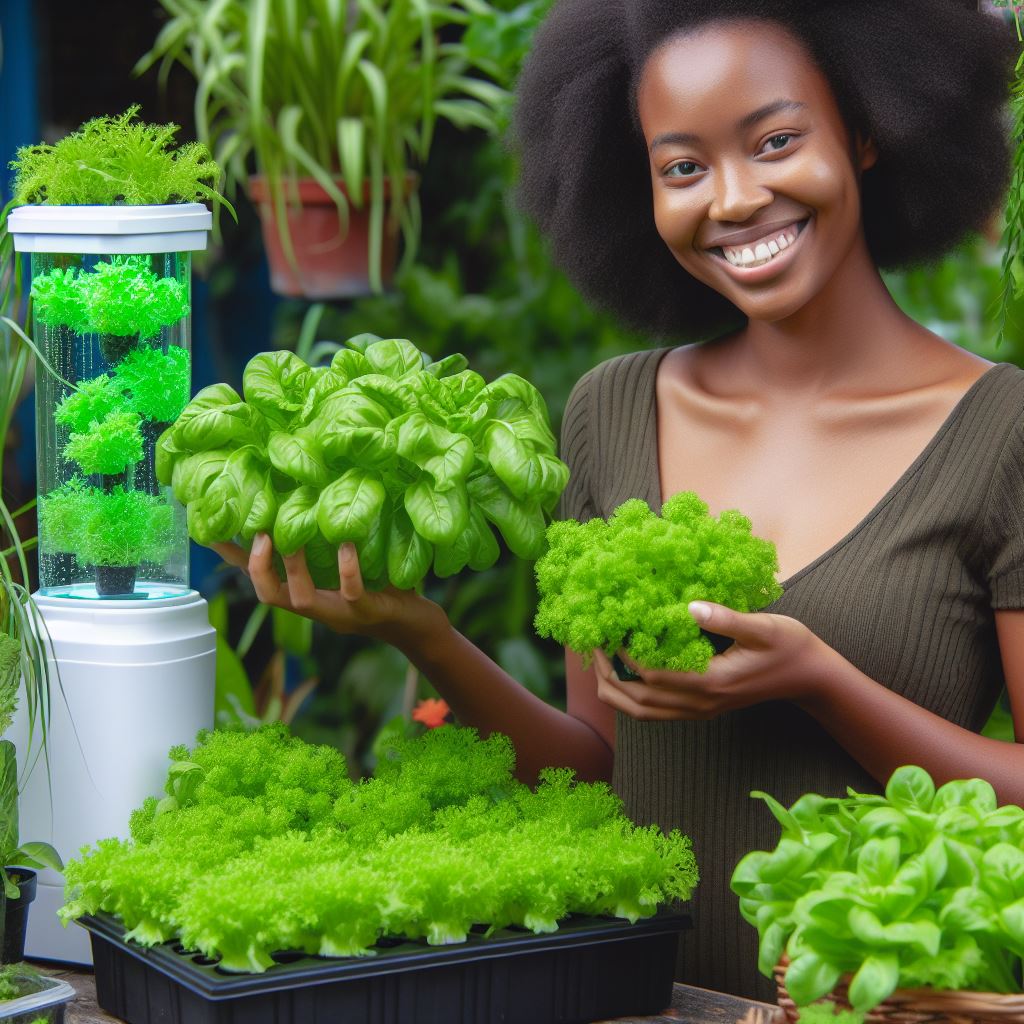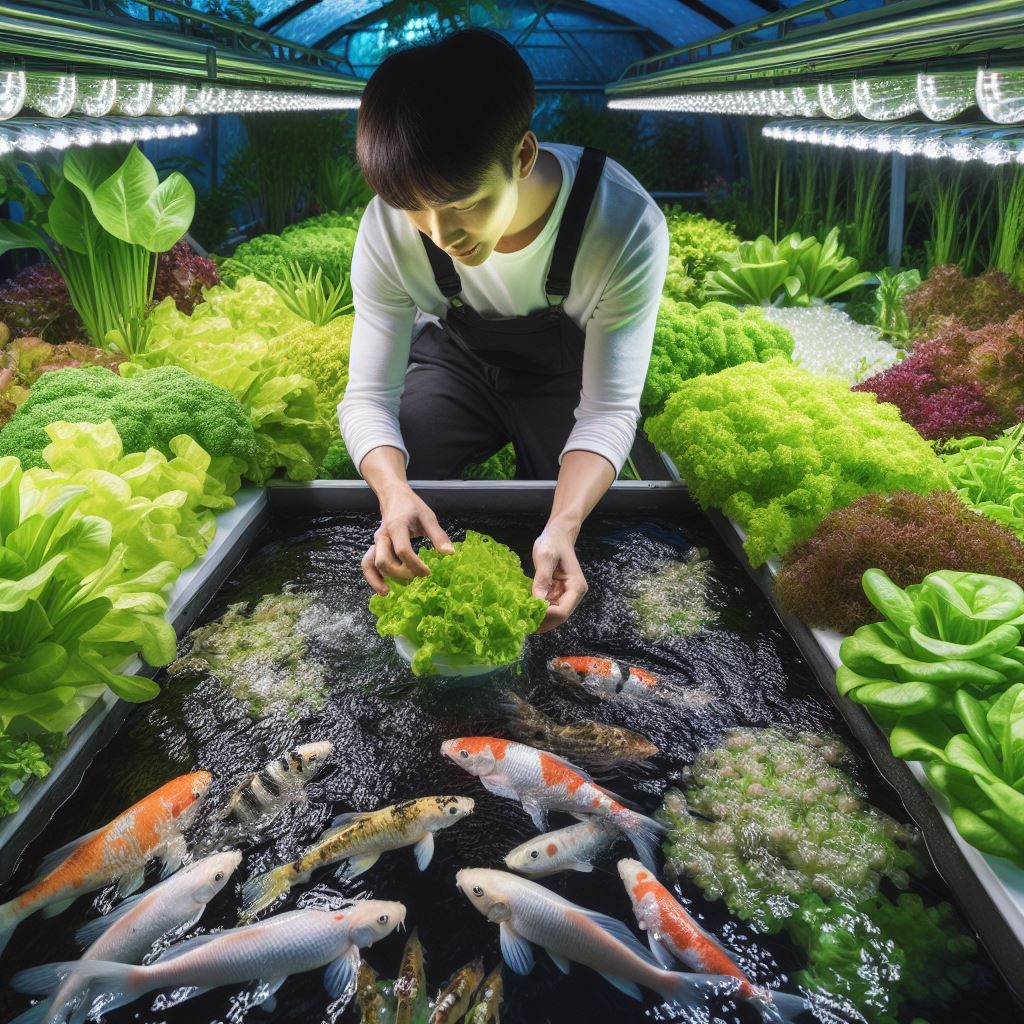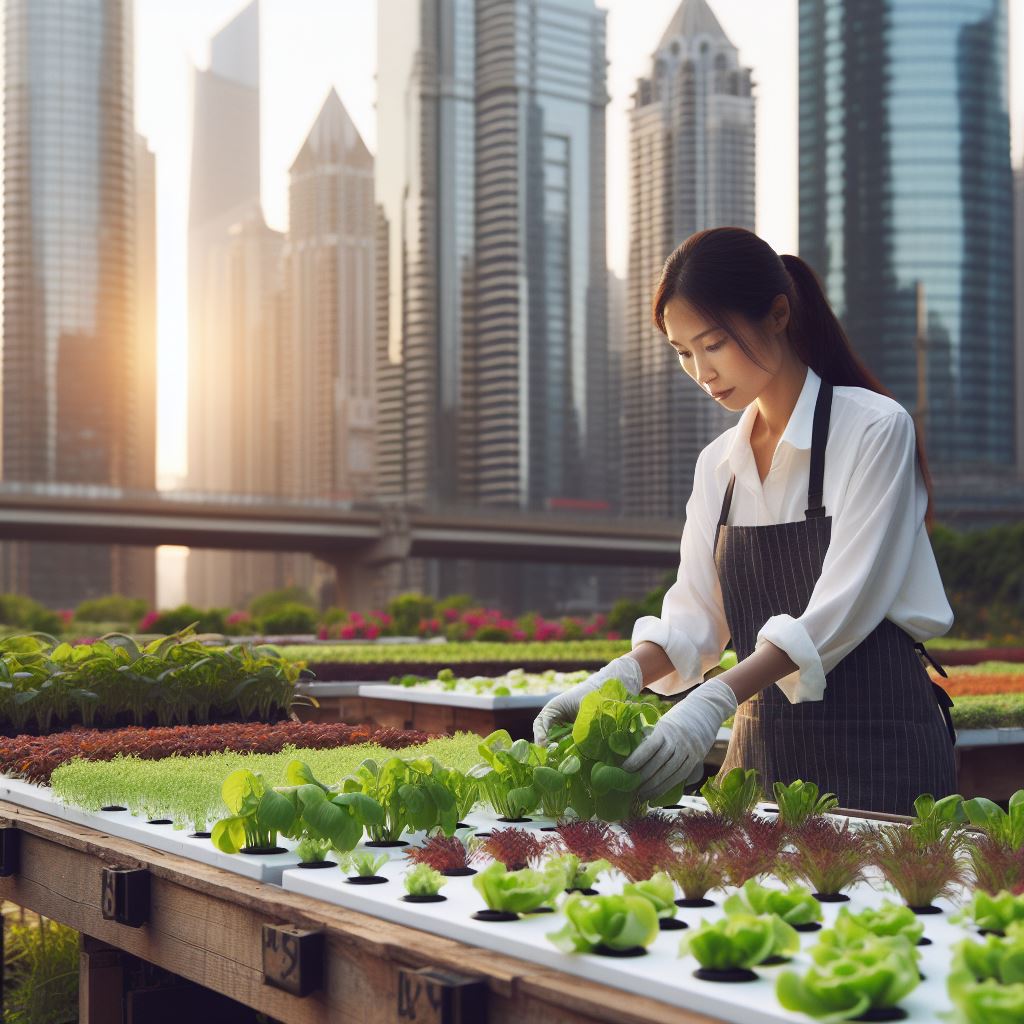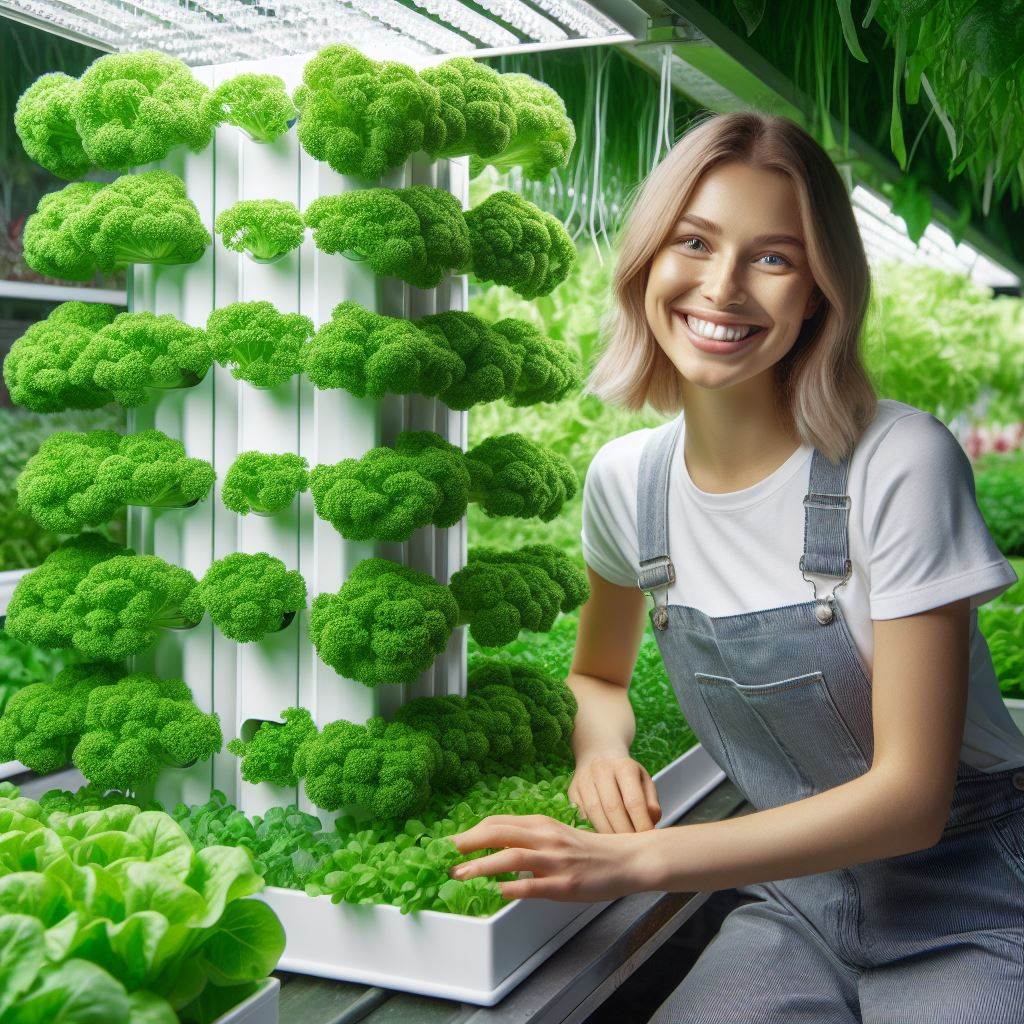Introduction
A. Definition of Hydroponics
Hydroponics is a gardening technique that eliminates the need for soil, allowing plants to grow in a water-based solution enriched with nutrients.
This innovative method offers numerous advantages that make it a popular choice among gardeners.
B. Advantages of Hydroponics
One of the main advantages of hydroponics is its ability to promote faster plant growth compared to traditional soil-based gardening.
By providing a direct and easily accessible supply of nutrients, plants can efficiently use their energy for growth instead of searching for nutrients in the soil.
This results in increased productivity and shorter harvest cycles.
Additionally, hydroponics allows gardeners to have better control over the nutrient levels in their plants.
By adjusting the nutrient solution, growers can ensure that their plants receive the ideal balance of minerals and elements necessary for their optimal development.
This precision also minimizes the risk of over or under-fertilization, leading to healthier plants and higher quality crops.
C. Importance of DIY Hydroponics
DIY hydroponics holds great importance as it empowers individuals to create their own soil-less gardens.
With simple materials and a basic understanding of the technique, anyone can set up a hydroponic system at home.
This not only promotes self-sustainability but also enables individuals to grow fresh and organic produce without relying on store-bought vegetables.
Basically, hydroponics is a revolutionary gardening method that offers significant advantages over traditional soil-based gardening.
Its ability to promote faster growth, better control over nutrient levels, and the importance of DIY hydroponics make it an appealing option for anyone interested in starting their own soil-less garden.
So why wait? Start your hydroponic journey today and experience the joys of a thriving, self-sufficient garden.
Getting Started with DIY Hydroponics
A. Necessary Materials
- Containers: Choose containers that are suitable for the type of plants you want to grow.
- Growing Medium: Select a suitable growing medium such as perlite, vermiculite, or coconut coir.
- Nutrient Solution: Purchase a nutrient solution that is specifically designed for hydroponic systems.
- pH Testing Kit: This will help you monitor and adjust the pH levels of the nutrient solution.
- Lighting: Provide adequate artificial lighting for your hydroponic garden if natural sunlight is insufficient.
B. Setting Up the System
- Choosing the Right Location: Find a spot that offers a stable environment with proper ventilation and temperature control.
- Assembling the Containers: Set up the containers, ensuring they have drainage holes and are securely placed.
- Preparing the Growing Medium: Moisten and rinse the growing medium before placing it in the containers.
- Mixing the Nutrient Solution: Follow the instructions on the nutrient solution packaging to prepare the appropriate concentration.
- Adjusting pH Levels: Use the pH testing kit to measure the pH of the nutrient solution and adjust it to the optimum range.
- Installing the Lighting: Position the artificial lighting system above the plants at an appropriate height.
Now that you have gathered all the necessary materials and set up your hydroponic system, you are ready to start growing your soil-less garden.
Transform Your Agribusiness
Unlock your farm's potential with expert advice tailored to your needs. Get actionable steps that drive real results.
Get StartedRead: Pocket-Sized Herb Gardens: Urban Farming Tips
Choosing the Right Plants for Hydroponics
A. Plants That Thrive in Hydroponics
Hydroponics is a soil-less gardening technique that allows you to grow plants in a nutrient-rich water solution.
When it comes to choosing the right plants for hydroponics, there are several options that thrive in this environment.
- Leafy Greens (Lettuce, Spinach, etc.): Leafy greens are perfect for hydroponics as they have shallow root systems that benefit from the constant supply of water and nutrients. Lettuce and spinach are popular choices.
- Herbs (Basil, Mint, etc.): Herbs like basil and mint are well-suited for hydroponics due to their compact size and fast growth. They add flavor to your dishes and are easy to grow hydroponically.
- Tomatoes: Tomatoes can be successfully grown in hydroponics systems, maximizing yield and minimizing diseases compared to traditional soil gardening.
- Strawberries: Hydroponic strawberries are known for their superior taste and high yields. They can be grown vertically, making efficient use of space.
B. Factors to Consider When Selecting Plants
When selecting plants for your hydroponics garden, it’s essential to consider a few factors to ensure successful growth and optimal results.
- Space Requirements: Different plants have varying space requirements, so consider the available space in your hydroponics system. Some plants, like strawberries, may require vertical supports.
- Nutritional Needs: Each plant has specific nutritional requirements. Ensure that the nutrient solution you use in your hydroponics system meets the needs of the plants you choose to grow.
- Growth Cycle Duration: Some plants have shorter growth cycles, while others take longer to mature. Consider the duration of the growth cycle and how it aligns with your gardening goals.
By carefully choosing the right plants for your hydroponics system and considering these factors, you can maximize your gardening success.
Remember to monitor and adjust your nutrient solution accordingly for each plant’s specific needs. Happy hydroponic gardening!
Read: Kitchen Window Herbs: Grow Your Own Flavor
Maintenance and Care of a DIY Hydroponic System
One of the key aspects of maintaining a successful DIY hydroponic system is monitoring and caring for the system.
Proper maintenance ensures optimal nutrient delivery, pH balance, pest prevention, and cleanliness.
In this section, we will discuss the various elements involved in the maintenance and care of a DIY hydroponic system.
A. Monitoring Nutrient Levels
- Regular Testing: Regularly testing the nutrient levels in your hydroponic system is crucial to its success.
This can be done using testing kits or meters to measure essential elements such as nitrogen, phosphorus, and potassium. - Adjusting Nutrient Concentrations: Based on the test results, adjust nutrient concentrations as needed.
This ensures that your plants receive the right balance of nutrients for healthy growth and development.
B. Controlling pH Levels
- Importance of pH Balance: Maintaining the correct pH level is vital for optimal nutrient absorption by your plants.
Most hydroponic plants prefer a pH range of 5.5 to 6.5. pH levels outside this range can lead to nutrient deficiencies or toxicities. - pH Adjustment Techniques: To maintain the desired pH level, you can adjust the pH using pH up or pH down solutions.
Carefully follow the instructions provided with these solutions and test the pH regularly to ensure stability.
C. Preventing and Managing Pests
- Common Hydroponic Pests: Just like traditional gardening, hydroponic systems are also susceptible to pests such as aphids, spider mites, and fungus gnats.
Regularly inspect your plants for signs of infestation and take appropriate measures to prevent their spread. - Organic Pest Control Methods: Prevent and manage pests organically by introducing beneficial insects like ladybugs or employing natural pest control methods such as neem oil or insecticidal soaps.
These methods reduce the risk of chemical residue and promote a healthier environment.
D. Regular Cleaning and Sanitization
- Cleaning the Containers: Regularly clean the containers and growing trays to prevent the buildup of algae, bacteria, or mineral deposits. Use a mild detergent and warm water, and rinse thoroughly before reusing.
- Flushing the System: Periodically, flush the system with clean, pH-balanced water to remove any excess salts or nutrient residues.
This helps prevent nutrient imbalances and maintains the overall health of your plants. - Maintaining a sterilized environment: To prevent the spread of diseases, it is essential to maintain a sterile environment.
This can be achieved by regularly sterilizing tools, equipment, and surfaces using a diluted bleach solution or other suitable sanitizers.
Proper maintenance and care play a vital role in the success of your DIY hydroponic system.
By monitoring nutrient levels, controlling pH, preventing pests, and maintaining cleanliness, you can ensure optimal plant health and maximize your yields.
Regular attention and proactive measures will help you enjoy the benefits of a healthy and productive soil-less garden.
Read: Herbs on a Shelf: Gardening in Small Areas

Harvesting and Enjoying the Fruits of Your Labor
Now that you have successfully grown your hydroponic garden, it’s time to reap the rewards!
Harvesting your plants at the right time is crucial to ensure the best flavor and texture.
Here are some tips to guide you:
A. Knowing When to Harvest
1. Visual Cues
Pay attention to the appearance of your plants.
Different vegetables and herbs exhibit various visual cues when they’re ready for harvest.
Look for changes in color, size, and texture.
For example, when lettuce leaves reach their desired size and become vibrant in color, it’s time to harvest them.
2. Taste Testing
If you’re unsure about the ripeness of your produce, taste testing is a reliable method.
Pluck a small sample and evaluate its flavor. Is it sweet, tangy, or bitter?
Adjust the harvest time accordingly to achieve the taste you desire.
Showcase Your Farming Business
Publish your professional farming services profile on our blog for a one-time fee of $200 and reach a dedicated audience of farmers and agribusiness owners.
Publish Your ProfileKeep in mind that some fruits and vegetables become sweeter as they fully ripen.
B. Harvesting Techniques for Different Plants
1. Leafy Greens
With leafy greens like spinach or lettuce, the goal is to continuously harvest the outer leaves, allowing the inner leaves to keep growing.
This way, you can enjoy a fresh supply of greens over an extended period.
Gently pluck the outer leaves from the base of the plant and leave the center intact.
2. Fruiting Plants
Fruits such as tomatoes, peppers, or cucumbers should be harvested when they’re fully ripe and firm.
Look for vibrant colors and gentle give when applying slight pressure.
Use a clean pair of scissors or pruning shears to cut the stem above the fruit, ensuring you don’t damage the plant.
C. Storing and Using Harvested Produce
1. Proper Storage Conditions
After harvest, it’s essential to store your fresh produce properly to maintain its quality.
Leafy greens can be stored in a perforated plastic bag in the refrigerator to retain moisture.
Fruiting vegetables are best kept at room temperature until fully ripe, and then they can be refrigerated.
Store herbs by placing them in a jar with water like a bouquet.
2. Recipe Ideas
Get creative in the kitchen with your freshly harvested produce!
Leafy greens are fantastic for salads, smoothies, or sautéing.
Fruiting plants can be used in various dishes like salsas, grilled vegetables, or roasted with spices.
Experiment with different flavors and textures to make the most of your homegrown hydroponic crops.
Remember, the joy of gardening lies not only in the cultivation process but also in savoring the fruits of your labor.
Harvest your hydroponic plants with care and enthusiasm, and enjoy the delicious rewards!
Read: Container Herbs: Spice Up Your Small Garden
Gain More Insights: Vertical Veg: Climbing Plants in Containers
Conclusion
A. Recap of the Benefits of DIY Hydroponics
DIY hydroponics offer numerous advantages, including space efficiency, water conservation, and faster growth rates.
With this soil-less gardening method, you can grow more plants in less space compared to traditional gardening.
Hydroponics uses up to 90% less water as it recirculates the nutrient-rich solution, reducing water waste significantly.
Plants thrive in a hydroponic system, receiving optimal nutrition and oxygen for accelerated growth and higher yields.
This method eliminates the need for soil, making it suitable for various environments, including urban areas, rooftops, and balconies.
B. Encouragement and Advice for Starting a Soil-less Garden
Are you considering starting a DIY hydroponic garden? Don’t hesitate, as the benefits outweigh the initial challenges.
Start small with a simple system, such as a nutrient film technique (NFT) or a deep water culture (DWC).
It’s essential to research and understand the specific requirements of the plants you want to grow hydroponically.
Invest in good quality nutrients, pH testers, and a reliable water pump to ensure prosperous growth.
Remember to monitor and adjust the nutrient solution regularly, maintaining the ideal pH level for optimal plant growth.
Lastly, be patient and learn from each experience, as you fine-tune your hydroponic gardening skills.
C. Final Thoughts
DIY hydroponics present an exciting and sustainable way to cultivate plants for both novice and experienced gardeners.
By embracing this innovative gardening method, you can grow fresh produce, herbs, or flowers year-round.
With a little effort and determination, you’ll be amazed at the abundance of your soil-less garden and the joy it brings.
So, why wait? Start your journey into DIY hydroponics today and reap the rewards of this efficient and rewarding gardening technique.




